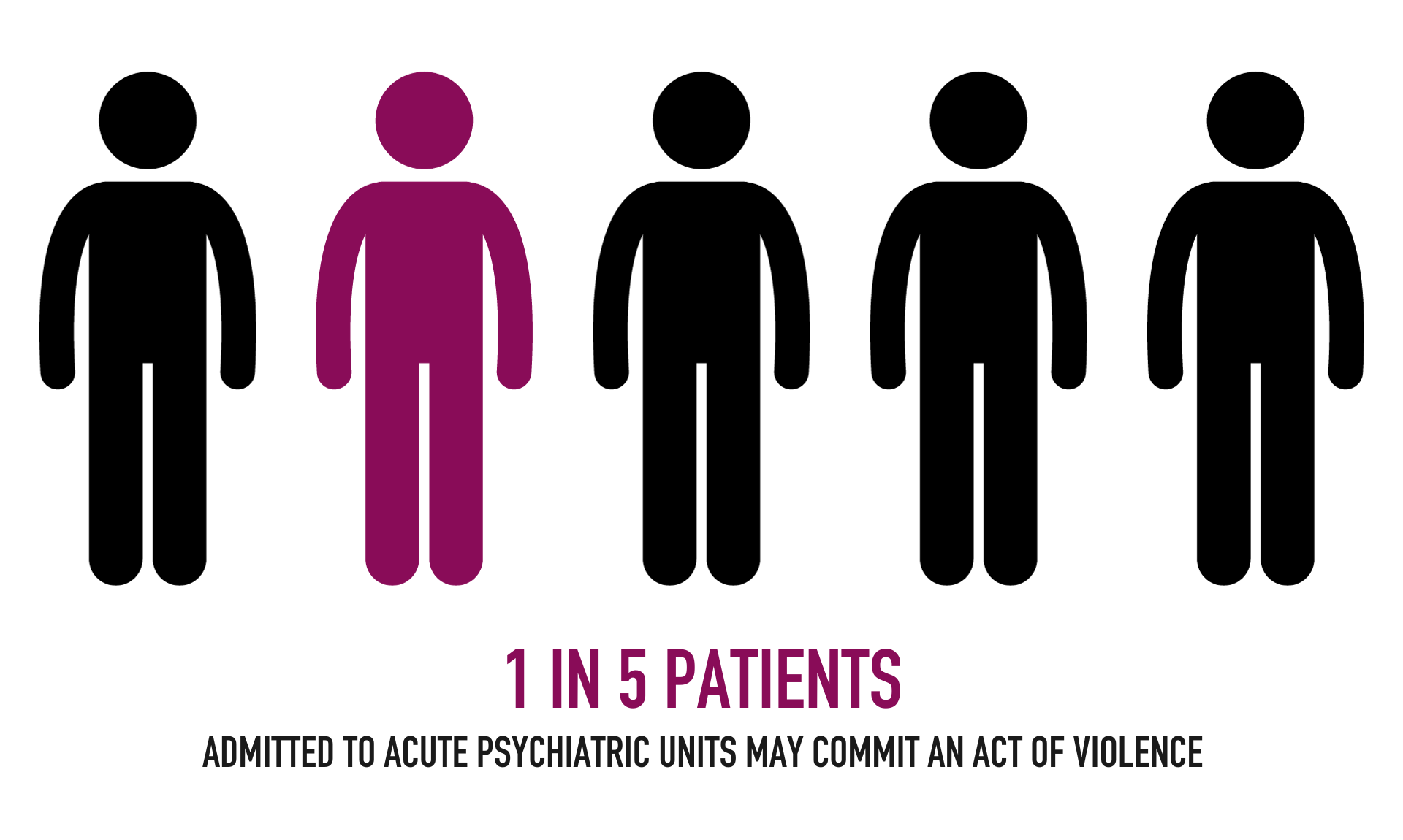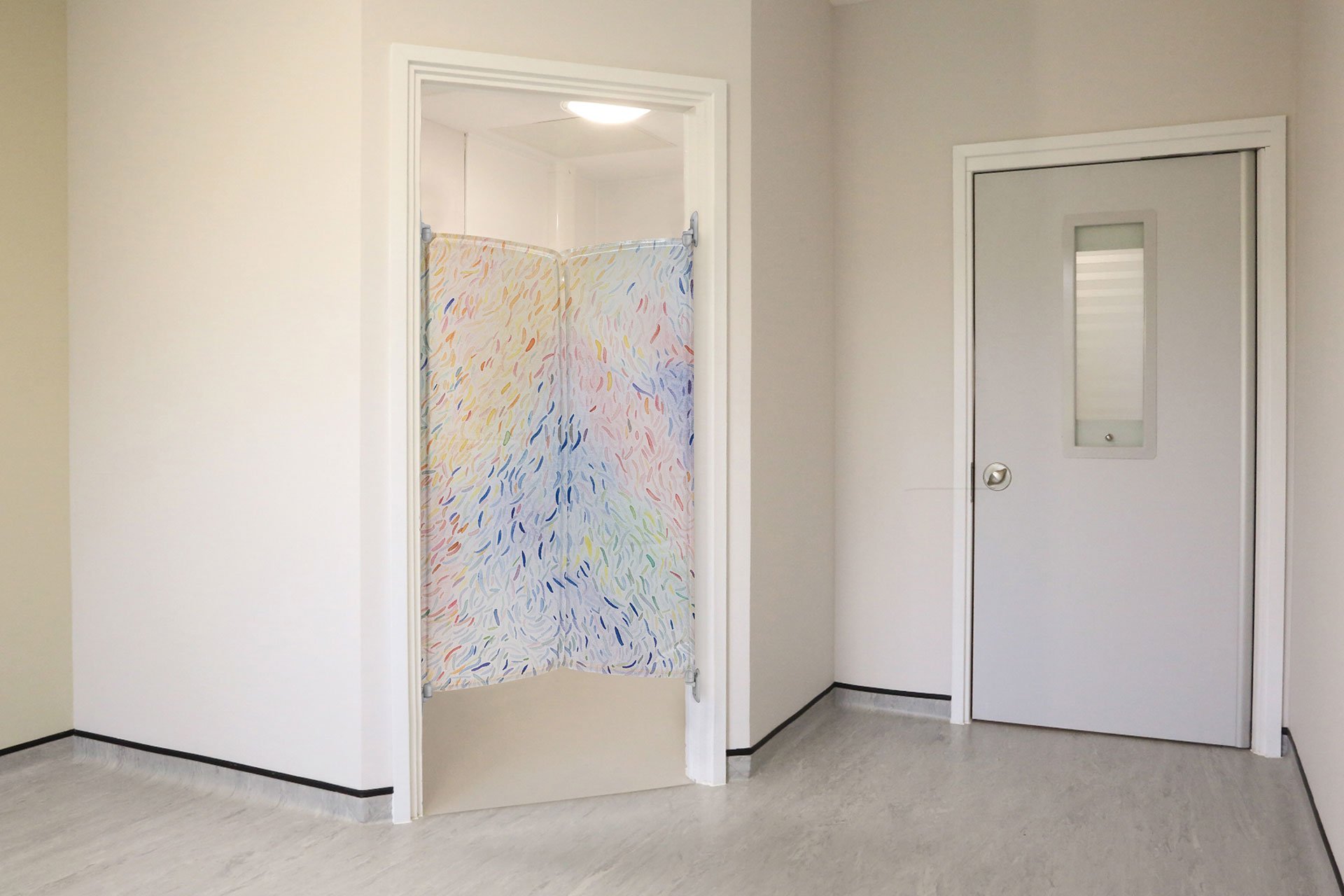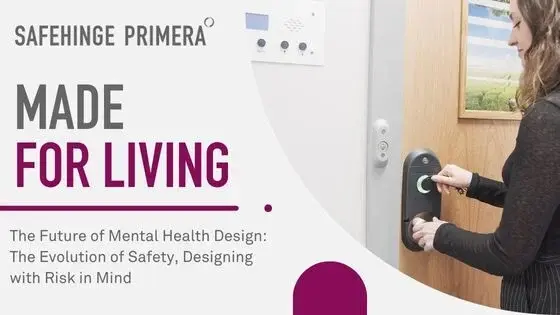Inpatient Mental Health facilities are vital sanctuaries for individuals going through a vulnerable time. While these spaces provide healing and support, they also pose unique challenges and risks to the safety of dedicated nursing staff who tirelessly provide essential care as well as patients. The presence of items with the potential for weaponization, whether improvised or planned, can have serious consequences.
*Prevalence and Risk Factors of Violence by Psychiatric Acute Inpatients: A Systematic Review and Meta-Analysis
Recognizing the critical nature of this issue, the Office of Mental Health (OMH) patient safety guide identifies the potential for weaponization as a criterion for product evaluation.
In Mental Health inpatient treatment facilities, objects and materials are instrumental in creating a normalized, therapeutic, and dignified atmosphere; the challenge lies in ensuring their design minimizes any potential for use as weapons (as well as reducing ligature risk). This article explores key aspects of safeguarding patients' and Mental Health workers' well-being while promoting environments that hold therapeutic value.
The Cost of Incidents
Inpatient Mental Health services rely on staff, ranging from facility managers to physicians, to provide safe environments and quality care. Attacks against other patients and clinical staff have far-reaching consequences, affecting both their physical and psychological well-being. These attacks often involve improvised weapons created from everyday objects found within the environment.
Beyond immediate physical repercussions, violent incidents lead to high staff turnover, more workplace injury claims, significant economic costs related to disability leave, and a decrease in patient and staff engagement and care quality (Workplace Violence Toward Mental Healthcare Workers Employed in Psychiatric Wards).
Recognizing the Complexities
While eliminating weaponization and ligature risks may be impossible, implementing best practices, such as selecting products that have been tested for the environments they will be placed in, can significantly reduce these risks. For instance, the Safehinge Primera Ligature Resistant Door for Bathrooms, with a lightweight and flexible design, strikes a balance between normalcy and privacy while minimizing the potential for ligature and weaponization.
Strategies for Minimizing Weaponization:
Comprehensive Risk Assessment
Conduct regular assessments to identify potential risks and vulnerabilities within the Behavioral Health inpatient treatment facilities, guiding the development of effective safety protocols. Collaborate with stakeholders to select products that have been designed to be ligature-resistant and reduce weaponization opportunities.
Education and Training
Empower frontline staff with knowledge and skills to identify and respond to potential weaponization. The ability to properly understand risk relating to weaponization empowers them to prevent situations from escalating, fosters engagement and allows them to effectively respond to distressed patients when providing inpatient care for Mental Health.
Designing with Dignity
Carefully consider the Mental Health space design and product selection to minimize the availability of potential weapons without compromising privacy and dignity. An example of where this sort of thinking can be deployed is when deciding whether a bathroom door should be installed or not.
Breakaway doors for bathrooms provide privacy and dignity to users but must be balanced against the risk of magnet ingestion & hygiene requirements. Selecting a product that minimizes the risk of magnet ingestion & uses materials that support hygiene may provide a balance that improves the goals of the designed space.
Open Communication and Collaboration
Foster open communication among staff and establish a clear, regular reporting system for incidents related to weaponization. Encourage staff and patients to report products that could present a risk, promoting a cooperative environment.
Recognizing the need for staff to understand the practical implications of safety measures, we advise that tailored mock-ups and trials are used before a new product is introduced to a Behavioral Health space. These initiatives allow staff to interact with products, understand their functionalities, and gauge potential risks.
Therapeutic Environments
Promote patient-centered care and therapeutic environments to reduce the likelihood of weaponization. Integrate art and nature-themed designs to support emotional well-being and recovery. Safehinge Primera has partnered with charity Hospital Rooms to integrate art into our removable door for bathrooms, supporting this approach.
Consulting with Expert Industry Bodies
Collaborate with industry bodies, such as NYS-OMH, Behavioral Health Facility Consulting, and Veteran Affairs, for advice and support in setting standards and processes for Behavioral Health treatment environments.
Ensuring the safety and well-being of both staff and patients will always be a top priority for Behavioral Health settings. Tackling the challenge of weaponization requires a comprehensive approach encompassing risk assessments, staff education, empathetic design, open communication, and a patient-centered focus. Through the diligent implementation of these strategies, Behavioral Health facilities can actively contribute to the creation of safer & more compassionate therapeutic environments for all stakeholders.
Contact us to learn more about how our solutions contribute to safer Behavioral Health environments.






